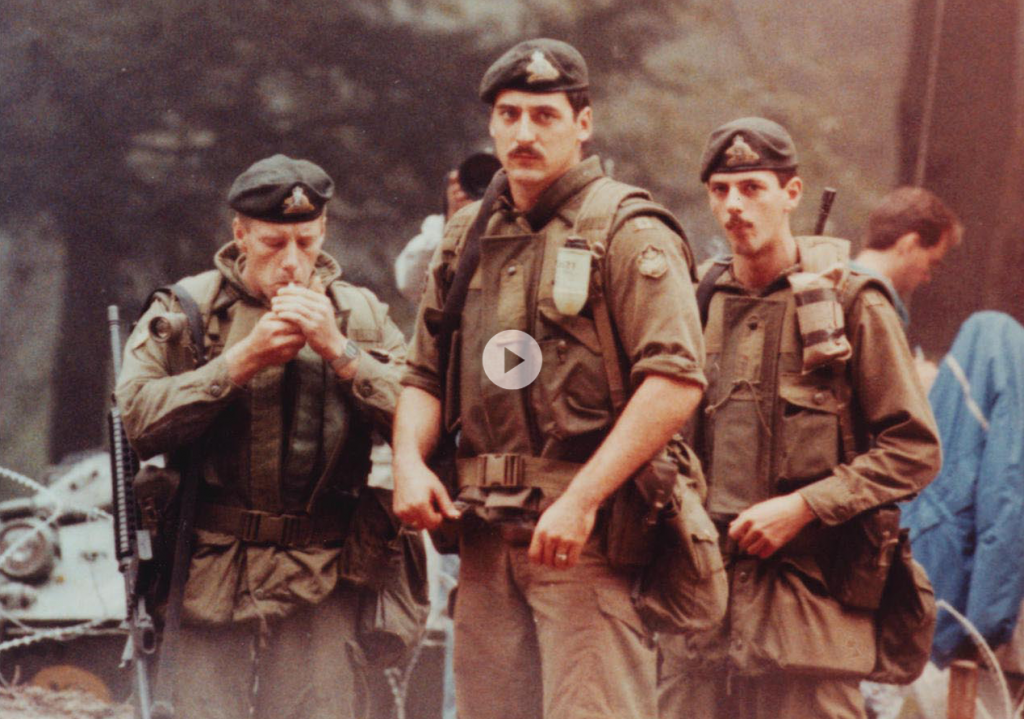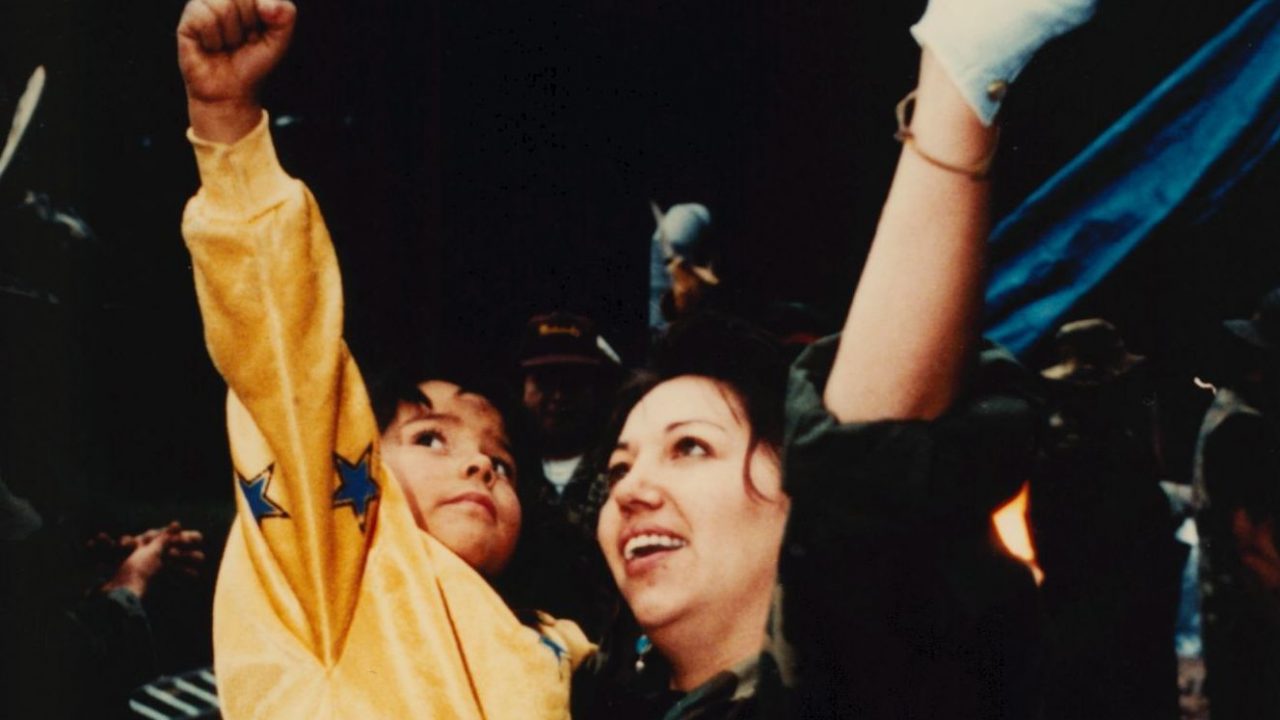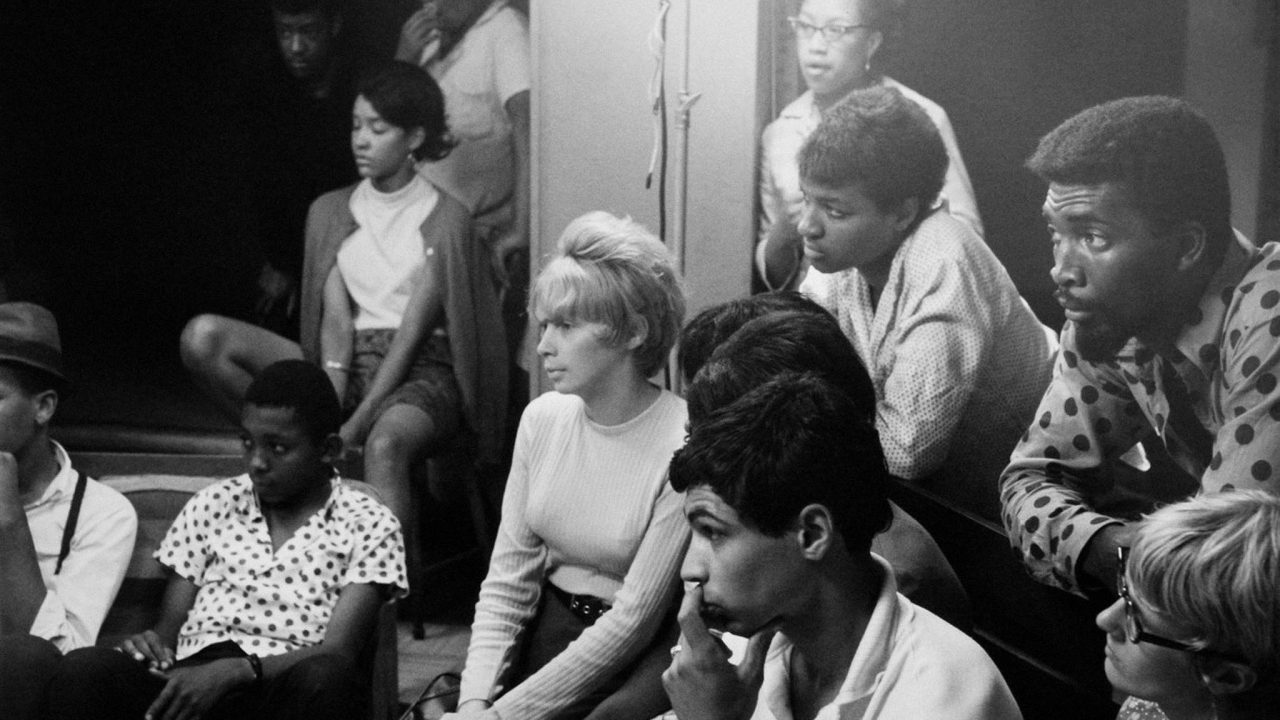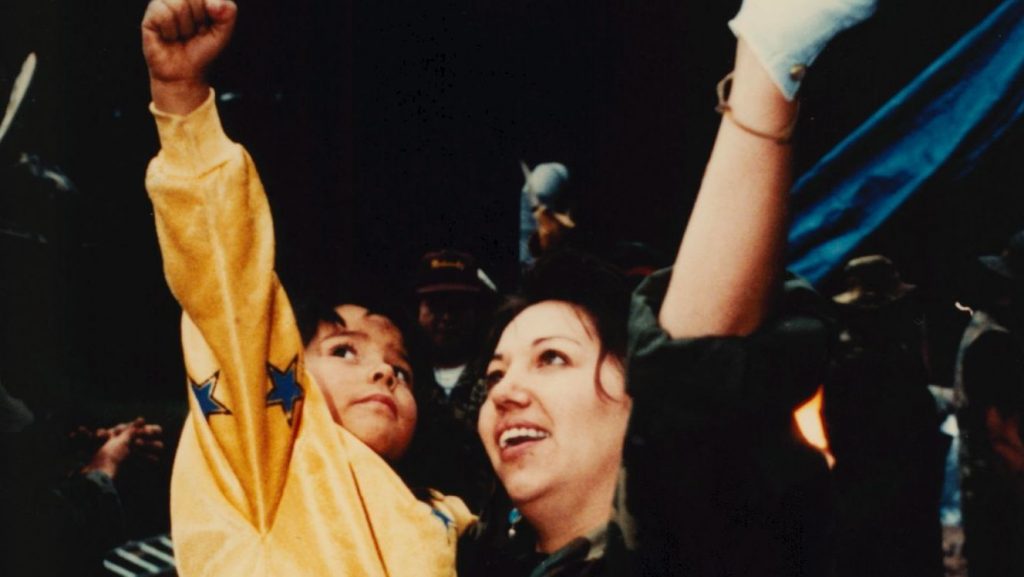
Kanehsatake: 270 Years of Resistance | Canada’s History of Resistance to Indigenous Land Claims
Kanehsatake: 270 Years of Resistance | Canada’s History of Resistance to Indigenous Land Claims
This blog post is part of a series of posts examining NFB productions that may be useful in helping viewers to rethink Canada’s relationship to First Nations peoples, who struggle to defend the rights they’ve won through the courts and/or treaties. These four NFB titles offer educators and students the opportunity to learn more about the impact of colonization on four First Nations communities, and to see their stories told by the Indigenous directors who filmed them. Each film focuses on an issue that is of prime concern to the First Nations.
Alanis Obomsawin’s 1993 feature documentary Kanehsatake: 270 Years of Resistance tackles the issue of Indigenous land claims.
Kanehsatake: 270 Years of Resistance, Alanis Obomsawin, provided by the National Film Board of Canada
Inquiry question: Can the federal government justify spending morean $155 million to crush resistance to the development of a private nine-hole golf course and luxury development on Kanien’kéhaka (Mohawk) lands in Oka, Quebec?
The following questions could be discussed before viewing:
- What is the role of the Indian Act in the history of Canada–First Nations relations?
- What do we know about the role of women in this community?
- What has been the response of the Canadian state to the land claims and survival needs of First Nations?
In the case of the internationally televised standoff between Kanien’kéhaka (Mohawk) protesters and police and military in Oka, Quebec, the Canadian government spent more than $155M to dismantle the blockades and peace camp that had been set up by the protesters in the summer of 1990.
I will never forget being in Heathrow airport in August of 1990 and seeing the news footage of the Canadian army in full gear, using tanks to face down the Mohawk warriors and clan mothers. Kanehsatake: 270 Years of Resistance is essential viewing, as it reveals that the Oka conflict represented a turning point in First Nations and federal government relations.
The abrogation of civil and human rights is captured by the filmmaker, Alanis Obomsawin, who was present throughout the 78 days of protest. The lengths that the army went to in denying reporters access to the protest camp is worthy of note. One could also ask: Why is it that the only news coverage allowed was the “official” reporting, which relied on hostile community and government spokespersons to “explain” the crisis?
Despite these attempts to prevent the Mohawk from telling their side of the story, the filmmakers were able to record the events as they happened, in addition to chronicling the many broken promises and treaty violations that led up to the standoff. Viewers learn the long backstory to this attempt to stop the development of the golf course, with the history of colonial relations going back to the 1600s. The continuation of that legacy into the Oka Crisis is revealed after failed negotiations.
Warning: There is a lot of powerful emotion and strong language in the film.
In the end, we are left with profound questions about the role of the Canadian state, which used its full force to crush a protest camp that consisted of 30 warriors, one spiritual leader, one traditional chief, 19 women and seven children.
Kanehsatake: 270 Years of Resistance – Mohawk Version:
Kanehsatake 270 Years of Resistance (Mohawk Version), Alanis Obomsawin, provided by the National Film Board of Canada
Go Deeper:
- Solidarity actions were important to the three major resistance struggles. What is the role of solidarity among the Indigenous peoples across Canada and North America?
- What are some of the landmark struggles fought elsewhere?
The theme of land claims is also very much at the heart of the three other films examined in this series of posts:
Pour lire cet article en français, cliquez ici.
Carol Arnold is of Métis-Cree ancestry on her mother’s side and was raised in the Métis community of Lac Ste. Anne, also known as Manito-Sakahigan. She has been a teacher for over 30 years in both Alberta and British Columbia, specializing in social studies, BC First Peoples and English. Although she teaches full time, she is involved in Aboriginal education workshop development and delivery for teachers in BC through her in the BC Teachers’ Federation. She loves using NFB films to teach her courses and finds that the NFB’s catalogue of Indigenous films contains excellent historical footage, in addition to documenting current events in Canada and the world.
Discover more Educational blog posts | Watch educational films on NFB Education | Subscribe to the NFB Education Newsletter | Follow NFB Education on Facebook | Follow NFB Education on Twitter | Follow NFB Education on Pinterest




